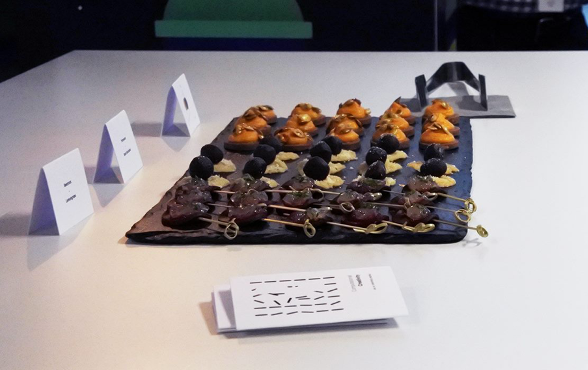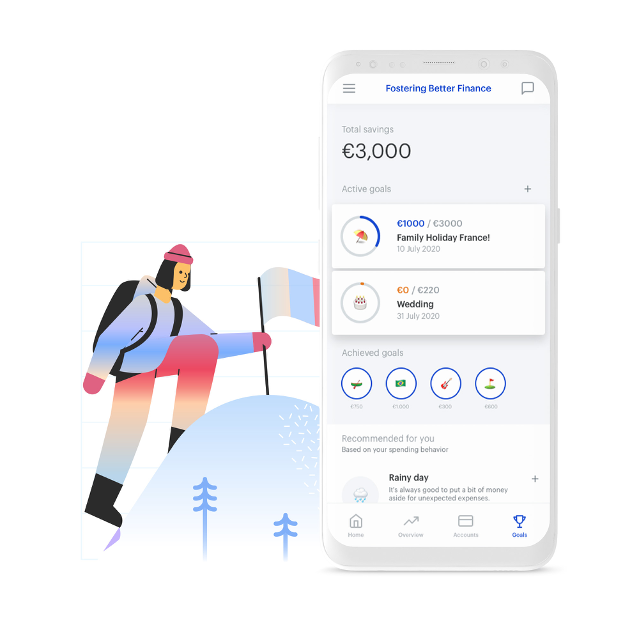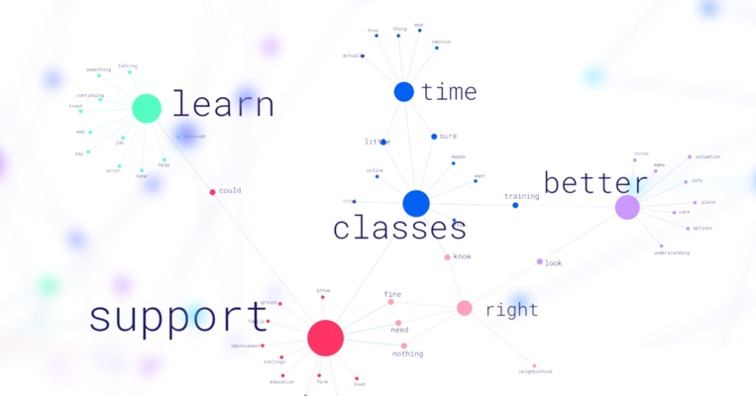Designed Intelligence: Envisioning new strategies
Envisioning new products, services, and business strategies by blending human and artificial intelligence.

By Connor Upton, Group Design Director, Fjord at The Dock, and James O’Neill, Service and Systems Design Lead, Fjord at The Dock.
“An invention has to make sense in the world it finishes in, not in the world it started.“ — Tim O’Reilly
Innovation and invention both face a core challenge of having to deeply understand the present and then imagining a different future. Across nearly all industry sectors, organisations are looking for ways to do innovation effectively. Many are exploring Artificial Innovation as a transformative technology. We’ve found that design is a critical skill in this innovation process.
Design research reveals evidence of people’s current unmet needs and desires.
Design thinking provides techniques for accelerating ideas
Design prototyping shows how a future solution would fit into people’s lives.
At the same time, making sense of the future — the world an invention finishes in — is becoming increasingly difficult. People’s digital behaviours are evolving rapidly, products and services now have a broad global audience, and prototypes need to reflect the data-driven experiences that we have all grown used to.
To combat these challenges, Artificial Intelligence is quickly becoming both the subject matter of innovation, as well as a tool for accelerating the innovation process. Adding AI into the innovation toolkit opens up new opportunities for research, ideation and prototyping. This requires designers and innovators to blend their key skills in understanding people’s needs with computational power to reveal signals in huge volumes of data.
Evolving innovation practices
This data-driven evidence allows us to challenge orthodoxies that clients sometimes have about how their business operates and how they are perceived by customers. This realisation can open up new paths forward in our ideation workshops. We also democratise AI by translating it into human terms to empower everyone to contribute to concept generation.
At the prototyping stages, we’ve been designing interfaces and visualisations to help users understand and interact with AI systems. We’ve also used AI techniques like Natural Language Processing (NLP) and computer vision to test out AI-driven experiences.
We’re using AI to extend our innovation capabilities, to help us to see much further in terms of opportunities, challenges and possible solutions. This is transforming how we approach innovation for new products, services, and strategies.
AI as idea machine
Parametric design is one AI-supported approach that’s transforming product design. Tools like Autodesk’s Fusion and Finch allow designers to propose performance criteria for a product, (amount of materials, stress limits, size, weight and so on), then uses machine learning to sketch out hundreds of concepts based on those parameters. The human designer is ultimately responsible for selecting and refining a final concept, but this approach can inspire new directions by exploring all viable options.

In a similar vein, the computational creativity programme at The Dock — Accenture’s global innovation hub — investigated how an AI could inspire new consumer packaged goods (CPG) products. Working with Accenture Labs, our Fjord team designed an interface onto a knowledge graph that was trained on thousands of flavour combinations and recipes. This allowed experienced chefs to explore a range of unusual but pleasant combinations and then apply their culinary skills to create new recipes. This all came together in learning and tasting workshop where a chef produced a range of AI-inspired tapas to demonstrate what the technology could support.
As well as experimentation, AI is accelerating new product innovation in research-heavy industries like life sciences and pharmaceuticals. New drug discovery is a complex process involving extensive research across multiple disciplines including genomics, chemistry and biology. Machine learning can be applied to process huge volumes of existing research and propose potential new drug targets. Our multidisciplinary team at The Dock designed a solution that helps scientists work together with AI to achieve this. A key component of this was mapping how the AI would fit into a new drug discovery and development process.
AI as new business model
With machine learning capability, processing power and data sources all available online, it’s now possible to create and scale entirely new digital services. 23andMe’s genetic testing and Stitch Fix’s personalised fashion are examples of novel AI-powered services that customers love. By blending awareness of current technological capabilities with research into human needs, we’re supporting clients to generate their own new services.
This is the approach used by the Fostering Better Finance team at The Dock. With a focus on retail banking, the aim is to envision new personalised digital services that go beyond the current brick and mortar experience. For example, achieving financial wellness requires good money habits; we all could use some help with this. Learning from behavioural research, the team are identifying the constraints and motivations that influence spending and saving. These insights are even more powerful when combined with AI. Using machine learning, the team are exploring ways to help people monitor and understand their habits and cope with unexpected costs. By combining human insights with AI-powered awareness, they’re identifying new opportunities for banks to provide value to customers.

AI as strategist
Centaur systems describe decision-making processes that combine human and artificial intelligence. The term was coined in relation to centaur chess, a version of the game that pits teams of people and algorithms against each other. Magnus Carlsen, the current chess grandmaster, trained using this approach and has become the highest-ranking chess player ever. If AI augmentation can improve our chess-playing abilities, can it also help us develop better business strategies?
We believe that blending human expertise with data will allow business to move from gut-feel decision making to “informed intuition”. Fjord Data Rumbles are workshops that combine design thinking, analytics and data storytelling to give clients confidence in their strategic vision.
Working with a major hotel chain, Fjord and the Client Innovation Services team at The Dock helped re-imagine how to measure customer experience. The company had growing doubts about the relevance of their existing auditing approach, which was developed around traditional physical inspection procedures and surveys. We used a data journalistic approach to identify a massive open data set of customer reviews. With this data we used AI text analysis to identify the key service touch points customers were discussing and the sentiments attached to them. Working alongside the client, we helped them distil the insights into eight key themes that informed their new customer experience strategy.

We took a similar approach to helping a large insurance company extend beyond existing policy- products into the world of digital health services. Giving people digital services that support them managing their health leads to a much stronger and more meaningful customer relationship. The challenge for insurers is that much of their customer data describes individuals in terms of risks rather than their real needs. Taking a similar text AI approach, we analysed over 200 interviews to identify the themes and issues that people need support on. These insights informed the strategy for this new digital health application.
Racing with the machines
While there is a lot of hype around AI and how it will change our world, for designers and innovators it’s important to be pragmatic about its uses. AI has become an important subject matter across industries but it often needs a translator. Designers can play a critical role in aligning the technological capabilities with people’s needs, in creating workflows that let people adopt it, and in designing interfaces that help people understand how it works. It is also an important tool for design. One that can scale our design research, enrich our understanding of human behaviour, and inspire us to design new products, services, and strategies we could never imagine on our own.
Read more about Designed Intelligence and on enhancing the human experience and empowering people within systems.






